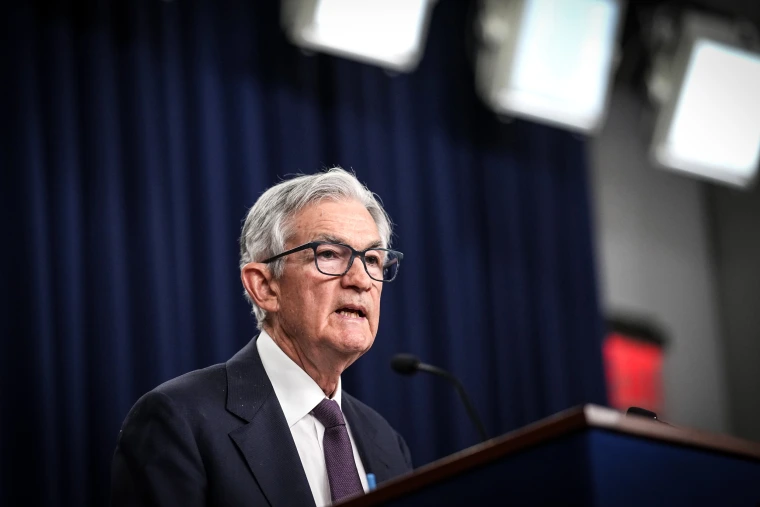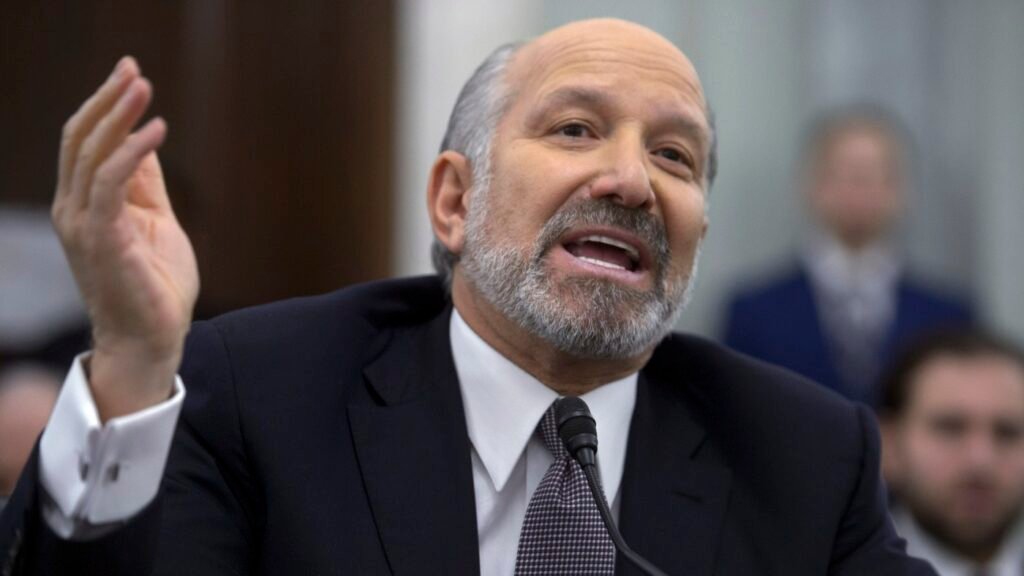- Trump’s Commerce Department now publishes GDP data on nine blockchains, making economic truth immutable and globally accessible.
- This bold move threatens the Federal Reserve’s grip on interest rate decisions by enabling real-time market pricing.
- Despite Fed Chair Jerome Powell’s resistance, blockchain transparency could restore free market principles to monetary policy.
The story begins with a simple announcement that sent shockwaves through Washington’s financial establishment.
The U.S. Commerce Department quietly posted America’s GDP data on Bitcoin, Ethereum, and seven other blockchains. What seemed like a tech experiment is actually Trump’s most brilliant chess move yet against the Federal Reserve’s stranglehold on our economy.
Why This Is a Game-Changer?
Let’s cut through the jargon = blockchain makes data tamper-proof and instantly accessible worldwide.
When Commerce Secretary Howard Lutnick declared “We are making America’s economic truth immutable and globally accessible like never before,” he wasn’t just talking about transparency. He was launching a revolution against central banking as we know it.
Tech investor Chamath Palihapitiya gets it. Speaking on the All-In Podcast, he explained the bigger picture: “All the GDP data is now going into a blockchain. So can you imagine what this starts?” The answer should terrify Fed bureaucrats everywhere.
GDP data shows unexpectedly strong 4.2% growth. Within seconds, smart contracts on DeFi platforms automatically adjust interest rates based on verified blockchain data. Mortgage rates jump from 6.8% to 7.2% instantly, corporate borrowing costs shift across the entire economy, and savers finally get market-determined returns. No waiting for Fed meetings, no political calculations, just pure market efficiency.
Compare that to our current joke of a system. Remember September 2024? When Powell surprised everyone with a massive 50 basis point cut just weeks before the election?
Market analysts openly questioned whether the timing was designed to help Kamala Harris’s campaign. That kind of political manipulation becomes impossible when markets set rates automatically based on verified blockchain data.
When economic data flows directly to markets through blockchain oracles like Chainlink and Pyth, something beautiful happens. Markets can price risk and set interest rates in real-time, based on actual economic performance rather than the political whims of unelected Fed officials.
The Fed’s Panic Makes Perfect Sense
Think the Federal Reserve is happy about this? Think again. Trump’s blockchain initiative bypasses their traditional gatekeeping role entirely.
No more waiting for Fed meetings.
No more Jerome Powell press conferences where he dances around basic questions about inflation and employment.
«But won’t this create chaos in financial markets?»
That’s exactly what Fed defenders want you to believe.
The truth is, markets already react instantly to economic data releases. The difference now is that the data comes directly from the source, verified by blockchain technology, instead of filtered through the Fed’s political lens.
Palihapitiya nailed the core issue: “All kinds of economic measures scrubbed for anonymity should get published so that you can have pricing oracles that actually tell you what’s happening in real time. And the markets will then react and set rates in real time.”
This isn’t about abolishing the Fed entirely. As Palihapitiya clarified, the central bank should stick to what it does reasonably well = banking regulation and payment system operations.
But interest rate manipulation? That’s where free markets beat bureaucrats every single time.
Powell’s Political Games Exposed

The timing couldn’t be more perfect. Trump’s blockchain transparency push comes as his tensions with Fed Chair Jerome Powell reach a boiling point.
Powell’s track record speaks for itself: calling inflation “transitory” when it clearly wasn’t, then surprising markets with aggressive rate hikes that seemed designed to hurt Trump’s re-election chances.
David Sacks, Trump’s crypto and AI czar, put it bluntly on the All-In Podcast: “He’ll cut for [Biden]. He’ll cut for [Yellen]. He’ll cut for Kamala [Harris]. He will not cut for Trump.” This isn’t conspiracy theory territory – it’s pattern recognition.
When central bankers make decisions based on political calculations rather than economic data, they undermine the entire system’s credibility. Blockchain data publishing eliminates that human bias factor completely. The numbers are what they are, published instantly and immutably for all to see.
Why Markets Beat Bureaucrats
The Fed doesn’t want you to understand that interest rates are just prices. They’re the price of money over time, and like all prices, they work best when set by voluntary exchange rather than bureaucratic decree.
Traditional Fed policy requires educated guessing about economic conditions, often using outdated data and political considerations.
Blockchain-enabled market pricing uses real-time information and the collective wisdom of millions of participants making actual financial decisions with their own money.
Which system sounds more reliable to you?
The Path Forward

Secretary Lutnick already announced plans to expand blockchain data publishing across all government agencies. Employment data, inflation metrics, trade balances – imagine if all these crucial economic indicators flowed directly to markets through tamper-proof blockchain networks.
«Won’t this reduce American financial sovereignty?»
Actually, it does the opposite.
When other countries see America leading in blockchain financial infrastructure, they’ll want to integrate with our systems. The dollar’s reserve currency status gets stronger, not weaker, when it’s backed by transparent, real-time economic data rather than Fed committee meeting minutes.
This initiative puts America on track to become the undisputed “blockchain capital of the world,” as Commerce Secretary Lutnick described it.
While other nations debate central bank digital currencies and worry about financial privacy, we’re building the infrastructure for truly free market-based monetary policy.
The Bottom Line
Trump’s blockchain economic data initiative represents something larger than just technological innovation. It’s a fundamental shift toward transparency, market efficiency, and reduced political manipulation of our financial system.
The Federal Reserve’s resistance to this change reveals their true priorities. They’d rather maintain their secretive, politically-influenced decision-making process than embrace the transparency and efficiency that blockchain technology enables.
(Ed. note: The most telling aspect of this entire controversy is how quickly Fed defenders resort to fear-mongering about market volatility rather than defending the current system’s actual track record.)
Will blockchain-based economic data publishing completely replace traditional monetary policy? Maybe not immediately. But it’s already forcing conversations about central bank accountability that Washington’s financial establishment has avoided for decades.
And that alone makes Trump’s latest move a victory for anyone who believes markets work better than bureaucrats when it comes to pricing money. The Fed’s days of unquestioned authority over interest rates may finally be numbered.
Previous Articles:
- Google’s New Blockchain Shakes Up Crypto’s Big Players
- Elon Musk’s Lawyer to Chair $200M Dogecoin Treasury Fund
- BofA Risk-Love Hits 13-Month High as Crypto Stays Flat
- Malicious npm Package Targets Crypto Wallet Apps on Windows
- Nestlé CEO Fired Over Policy Breach; Stock Remains Unshaken
